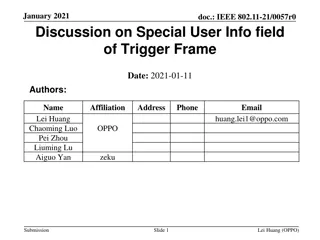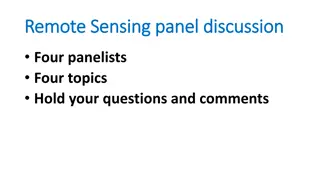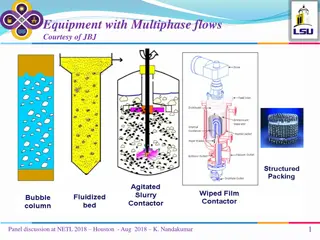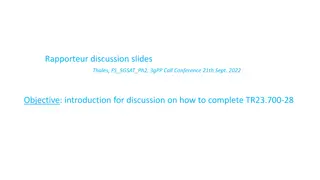
Ways of Specifying Database Queries: Gestural DBTouch, QBE, Keywords, and More
Explore the various methods of specifying database queries such as Gestural DBTouch, Query By Example (QBE), Forms, Keywords, Natural Language, and Visual Query Builder Tools. Dive into the intricacies of these approaches and their effectiveness in interacting with databases.
Download Presentation

Please find below an Image/Link to download the presentation.
The content on the website is provided AS IS for your information and personal use only. It may not be sold, licensed, or shared on other websites without obtaining consent from the author. If you encounter any issues during the download, it is possible that the publisher has removed the file from their server.
You are allowed to download the files provided on this website for personal or commercial use, subject to the condition that they are used lawfully. All files are the property of their respective owners.
The content on the website is provided AS IS for your information and personal use only. It may not be sold, licensed, or shared on other websites without obtaining consent from the author.
E N D
Presentation Transcript
Big Picture There are many many ways of specifying database queries Gestural: DBTouch and GestureDB By Example: QBE By Forms By Keywords By Natural Language By Visual Query Builder Tools Yet another Combining Visual QBT with example-driven tweaking
Big Picture There are many many ways of specifying database queries Gestural: DBTouch and GestureDB By Example: QBE By Forms By Keywords By Natural Language By Visual Query Builder Tools Yet another Combining Visual QBT with example-driven tweaking
Rank/Rate Mechanism Space of Queries (1-5-- large) System Interpretability (1-5 more) Intuitiveness (1-5--more) Interaction Difficulty (1-5--low) Gestural QBE Forms Keyword Search Natural Language Visual Builder Dataplay
Rank/Rate Mechanism Space of Queries (1-5-- large) System Interpretability (1-5 more) Intuitiveness (1-5--more) Interaction Difficulty (1-5--low) Gestural 2 QBE 5 Forms 1 Keyword Search 1 Natural Language 5 Visual Builder 3 Dataplay 4
Rank/Rate Mechanism Space of Queries (1-5-- large) System Interpretability (1-5 more) Intuitiveness (1-5--more) Interaction Difficulty (1-5--low) Gestural 2 3 QBE 5 5 Forms 1 5 Keyword Search 1 2 Natural Language 5 1 Visual Builder 3 5 Dataplay 4 4
Rank/Rate Mechanism Space of Queries (1-5-- large) System Interpretability (1-5 more) Intuitiveness (1-5--more) Interaction Difficulty (1-5--low) Gestural 2 3 4 QBE 5 5 3 Forms 1 5 5 Keyword Search 1 2 3 Natural Language 5 1 5 Visual Builder 3 5 4 Dataplay 4 4 3
Rank/Rate Mechanism Space of Queries (1-5-- large) System Interpretability (1-5 more) Intuitiveness (1-5--more) Interaction Difficulty (1-5--low) Gestural 2 3 4 3 QBE 5 5 3 5 Forms 1 5 5 3 Keyword Search 1 2 3 3 Natural Language 5 1 5 2 Visual Builder 3 5 4 4 Dataplay 4 4 3 4
Other Thoughts Found the argument for both direct manipulation and examples quite convincing Still troubling that many users made mistakes in querying How would complete novice users do? Would GestureDB be better for them? Or Forms?
Understanding Limitations of DataPlay Aggregation queries are not supported Can it answer queries of the following form: Find the names of all people who live in the same city and on the same street as their manager. Find the names of all people who do not work for IBM Find the names of all people who earn a salary that is higher than the salary earned by any person who works for IBM. Anything involving self-joins seems hard Anything involving nested sub-queries seems hard





















